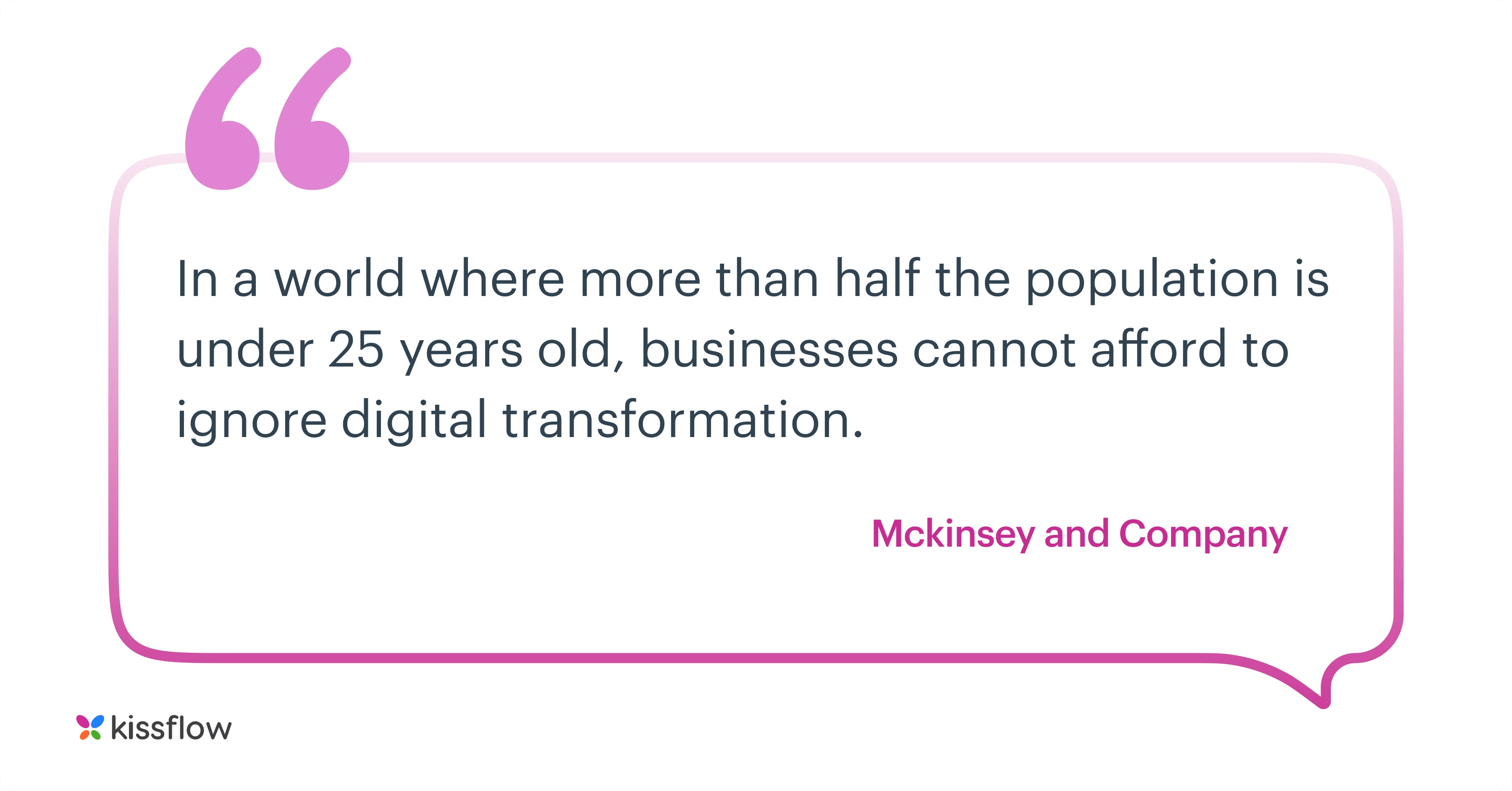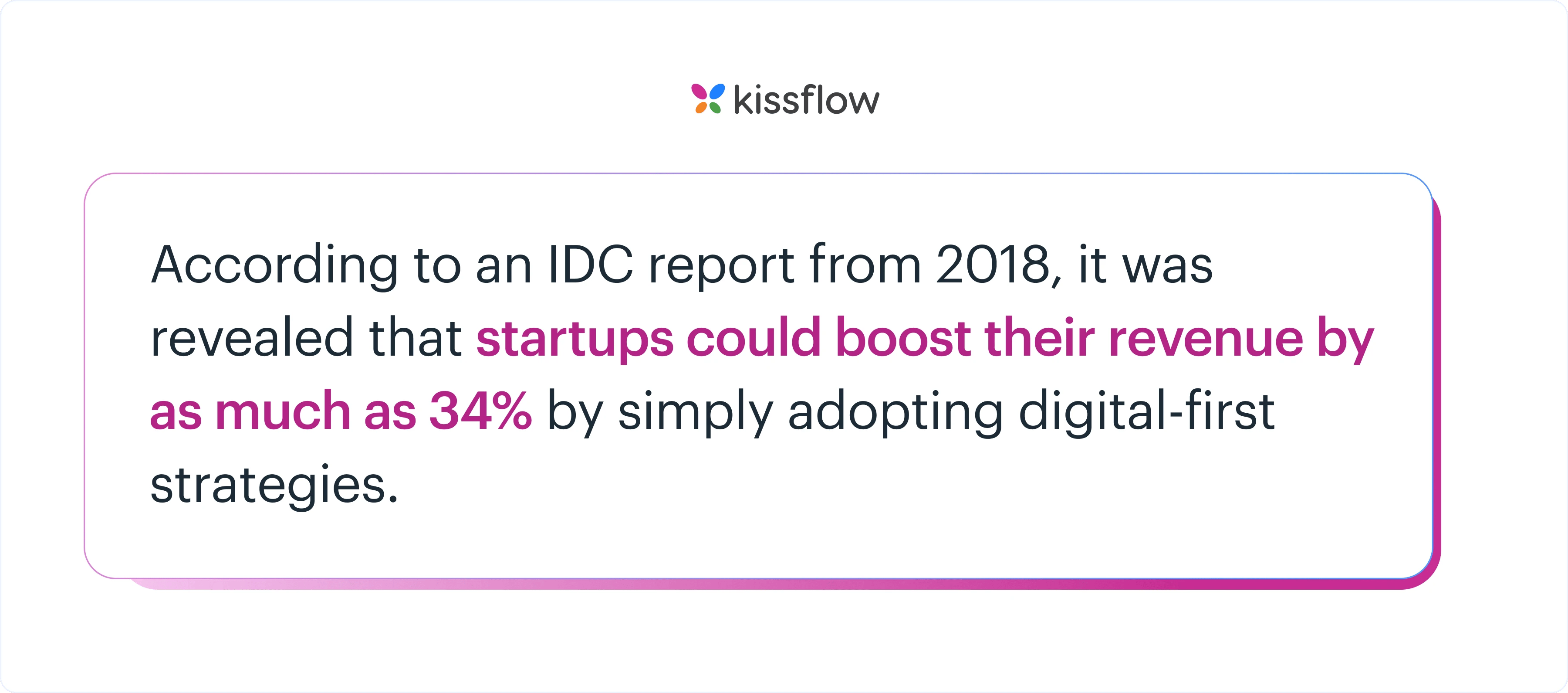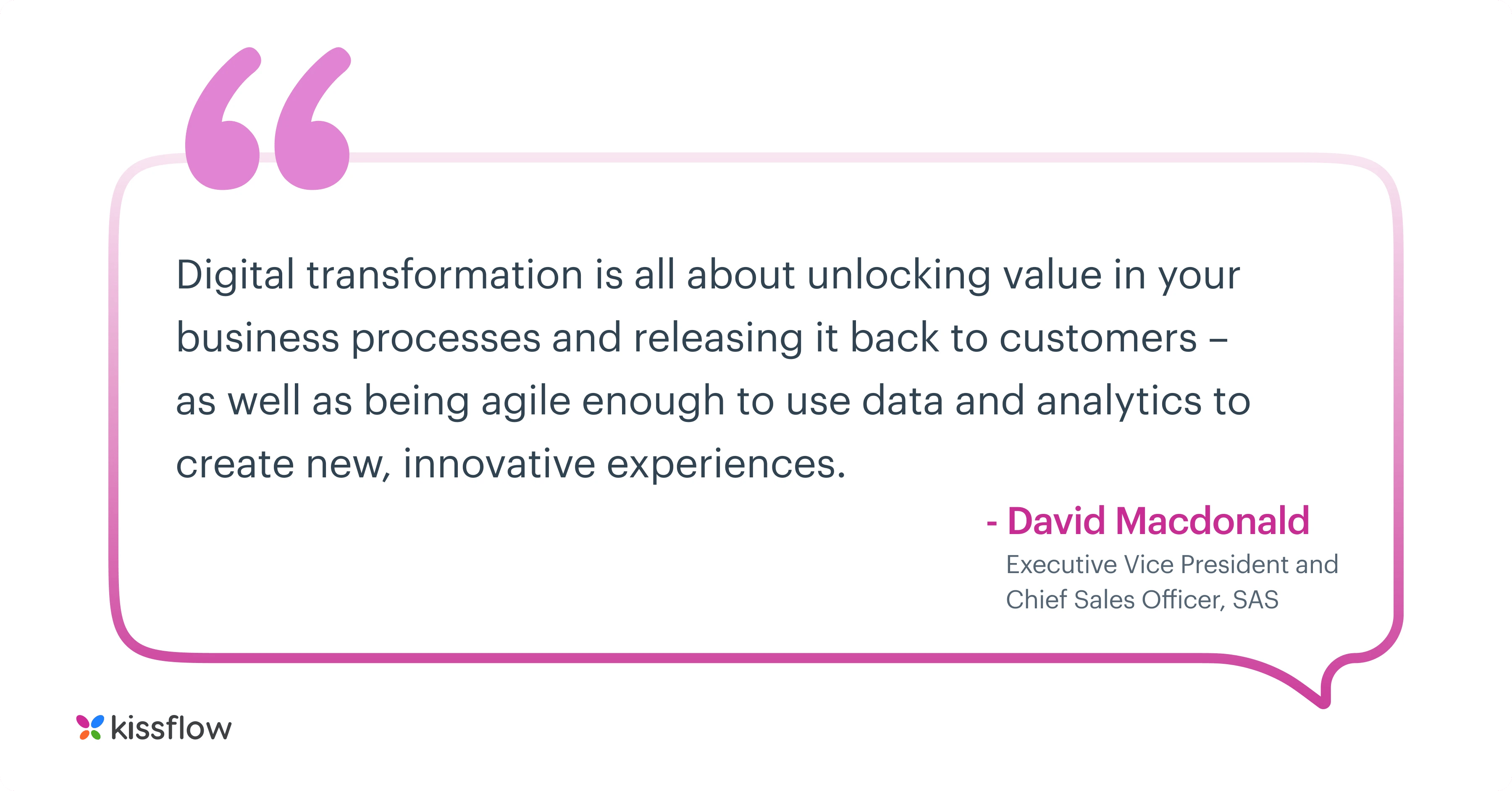
- >
- Digital Transformation >
- The cost to implement Digital Transformation in 2023: How to reduce it?
The cost to implement Digital Transformation in 2023: How to reduce it?
Team Kissflow
Updated on 4 Apr 2025 • 5 min read

While digital transformation may initially require substantial investment, it ultimately serves as a key driver for long-term cost savings and enhanced operational efficiency. For business technology professionals who spearhead transformative IT initiatives, the quest for cost optimization is as critical as any strategic pursuit.
This post uncovers how adopting digital transformation can result in notable savings, ensuring that tech leaders are armed with the requisite knowledge and insights to leverage this potent tool for cost efficiency in the continuously evolving digital landscape.
The average cost of digital Transformation
The global spending on digital transformation reached over $ 1.3 trillion in 2020, 10.4 per cent more than in 2019. The global digital transformation market is expected to experience significant growth, an increase from $469.8 billion in 2020 to $1,009.8 billion by 2025. This represents a compound annual growth rate (CAGR) of 16.5 per cent.
According to Zippia research, up to 70% of organizations already have a digital transformation plan in progress or are currently working on one. Over the past few years, managers and executives of business organizations have been showing an increased willingness to invest in digital transformation. Up to $1.5 trillion was spent on digital transformation in 2021 alone. With an expected cumulative growth rate of 9.1% over the next five years, global spending on digital transformation may reach 6.8 trillion by the end of 2023.
Despite the increasing adoption of digital transformation, not everyone finds it affordable enough. According to Altimeter research, about 28% of companies still think digital transformation is costly. A Flexera report from 2021 also revealed that about 49% of companies prioritize spending on cybersecurity over digital transformation. The realization that digital transformation can help businesses save costs, in the long run, will probably incentivize the adoption of digital technologies for many businesses.
Can digital transformation reduce spending?
For businesses who can afford it and are willing to invest in digital transformation, the potentials to reduce cost in their business processes while also increasing revenue are immense.
According to an IDC report from 2018

Technology can be your greatest ally when it comes to controlling your budget and cutting unnecessary expenses. Many organizations are betting on the growth and adaptation that digital transformation promises as a way to cut costs in their operation, strategy, and business management.
Integrating digital technology into an organization's operations, such as day-to-day business processes, data management, and communication, can help cut costs in various ways. In terms of strategy, digital transformation causes a notable change in how you work and can help you make better decisions in delivering value to customers.
Digital transformation also impacts the management aspects of a business. Thanks to digital adaptation, many companies have seen an evolution in their overall business models in ways that help them cut costs and maximize investment.
Benefits of managing the cost of digital transformation projects
As mentioned above, the benefits of digital transformation affect different aspects of a business. Primarily, digital transformation aims to integrate digital technology into all areas of a business to change how you operate and deliver value to customers. This entails a lot of benefits, some of which contribute directly and indirectly to better cost management for an organization.
The following are some of the benefits of digital transformation that contribute to cost reduction:
Improved productivity
One of the expected consequences of increased technological adoption is improved process efficiency. Companies are constantly looking for ways to help their employees work better, faster, and more accurately. Digital transformation can help accelerate this.
Adopting a digital culture can help reduce time spent on processes, eliminate mundane tasks and add new functionalities or strategies that add value to your existing process. Something as simple as automating critical steps in business processes can cause huge savings in overhead costs for an organization.
Better resource management
Leveraging digital technologies helps an organization manage resources better with slicker and more streamlined operations. Digitally transforming a business often involves gradually phasing out or replacing inefficient legacy systems for more agile digital alternatives. This end-to-end digitalization approach can help eliminate costly manual processes and legacy infrastructure, along with all the costs associated with managing them.
Take an organization that opts for cloud operations instead of an in-house server, for instance. It means they also get away with all the associated costs of maintaining or upgrading a local server. At the same time, the cloud system is more adaptable and can be expanded more quickly and at a lower cost.
Improved consumer engagement
The ultimate goal of digital transformation is to change how an organization delivers value to customers. This in itself can lead to better outcomes in cost management. An improved understanding of the demands and needs of your customer will lead to better allocation of resources in meeting those needs-with that comes with less wastage and better outcomes.

Faster time to market
For businesses that need to roll out new products into the market continually, digital transformation can shorten the product life cycle. The reduction in development time also means a reduction in cost across the production timeline.
What are the cost-saving opportunities of digital transformation?
Every business presents a unique opportunity to cut costs and achieve better returns on investment through digital transformation. Below are a few cost-saving opportunities that organizations can leverage to cut recurring and capital costs for their business.
Reducing margins of error
Human error is one of most businesses' most significant causes of losses. This goes beyond errors incurred during bookkeeping or manufacturing inefficiencies. Every business activity, from sales to marketing and even internal communication, can throw up significant errors that adversely affect business and financial outcomes. With digital transformation, reducing these errors by as much as 90 percent is possible, saving costs accordingly.
Centralizing operations
Businesses with siloed processes and operations lose more money than they should. One of the core goals of digital transformation is to centralize operations, information entry, communication, and data management. Having a single source of truth for everything is a huge opportunity to save time and cut costs.
Reducing downtime
System failures, missed deadlines, and downtimes are some of the major ways businesses lose money. With digitization and automation, businesses can reduce both human and technological downtimes. For instance, automating technical support for your customer means they will always have access to information whenever they need help. This is one of the many ways you can ensure consistency in service delivery.
Personnel costs
With automation, several processes that people handle are set on auto-pilot. This reduces the need to hire more people for specific roles since existing staff aided by technology can work just as effectively. In addition, digital automation helps cut personal costs such as onboarding, training, and HR management, allowing the company to save significantly on the overhead costs of these processes.
Increased agility
Digital transformation accelerates innovation within an organization. Fast-tracking the process of delivering innovative products and services can help reduce costs. The longer it takes to deliver these products, the more costs accrue.

Process Automation - Transforming complexity to productivity
[Free eBook]
Thank you for downloading!
Technology implications that can reduce your business cost
Digital transformation is concerned with the sustainable usage of digital technologies to drive better business outcomes. Expanding your technology stack strategically can have varying implications for your business. Cost saving is one of the results of implementing digital technology as part of a structured and well-managed digital transformation strategy.
The following are some of the ways technology can help you cost business costs and boost revenue:
Automation
Automation tools improve efficiency by helping employees work smarter and more effectively. By identifying repeatable tasks, organizations can introduce automation tools that push these tasks along with little to no human intervention. This minimizes human error, improves productivity, and simplifies the workload of your personnel-saving costs in the long run.
Cloud
Migrating your core business operations to the cloud is one of the many opportunities for saving costs that digital transformation provides. Cloud-based systems are cheaper and more reliable compared to conventional systems. Cloud migration is particularly beneficial for small businesses because it allows them to enjoy the same infrastructural capabilities bigger businesses enjoy due to the reduced upfront cost.
Low-code
Low-code tools are designed to simplify the process of building internal process apps and workflow tools to optimize business operations. Low-code development is one of the most innovative advances of the modern business era. It democratizes app development, allowing non-technical business users to build the apps they need to solve problems and address their specific business needs.
Low-code tools save costs by:
- Improving business agility
- Boosting the productivity of business users and development teams
- Improving collaboration between business and IT
- Cut development time and costs
How Kissflow enables cost-effective digital transformation
Kissflow offers powerful features that make cost-effective digital transformation possible. As a robust no-code and low-code work platform, Kissflow offers all the functionalities needed to accelerate digital transformation. With Kissflow, you can migrate core operations to the cloud and manage them seamlessly from a centralized work platform with loads of advanced functionalities.
Kissflow also has tools for building custom applications to automate key processes, manage requests and digitize operations seamlessly. The holistic functionalities and innovative tools offered by this platform drive efficiency and business productivity and consequently cut costs as you gradually move towards achieving true digital transformation for your organization.
Schedule a demo today to learn more about how Kissflow enables cost-effective digital transformation.
-Apr-08-2024-06-34-59-2050-AM.webp)
Evaluate your company's digital maturity
✅ Get a clear understanding of where your organization stands
✅ Uncover gaps in your digital strategy
✅ Develop a well-defined digital roadmap
Related Articles












